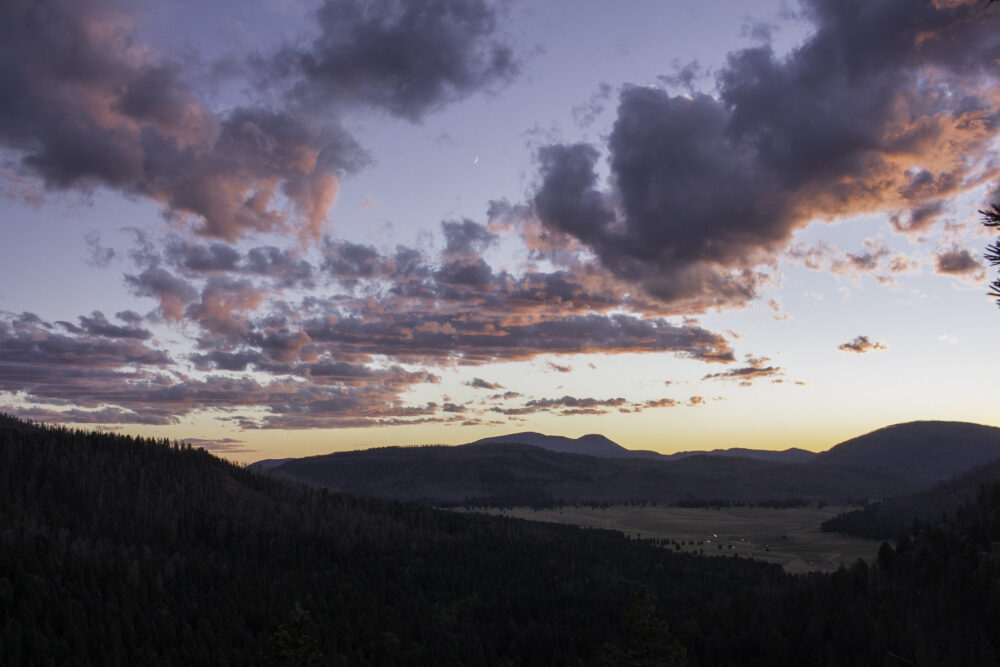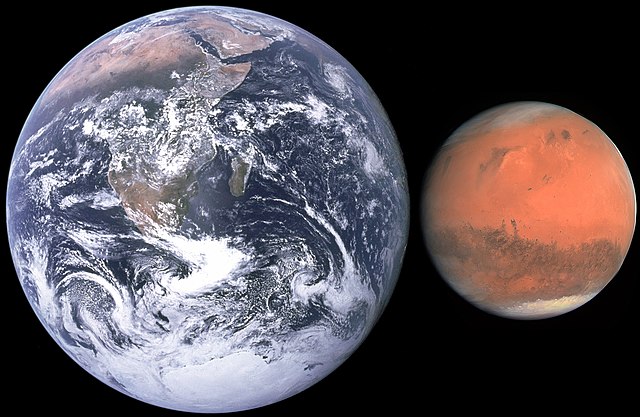
By Christy Wall, Atmospheric Scientist and McCurdy Charter School Sixth Grade Teacher
The sun makes it possible for us to live on Earth, and radiation from the sun is what delivers heat to Earth. But Mars isn’t that much farther from the Sun than we are. What makes Earth’s climate suitable for life? Our unique atmosphere!
What is an atmosphere? It’s the blanket of air that surrounds a planet. Mars has a much thinner atmosphere than our planet, which is a major factor that makes the Red Planet colder than Earth.

Earth’s atmosphere is composed primarily of nitrogen and oxygen. Our atmosphere is critical to holding in heat from the sun and making Earth a place where we can live. Our atmosphere is pretty special. It has different layers, kind of like a cake. The lowest layer contains the oxygen that we breathe. Other layers protect us from UV rays from the sun.
The pressure of our atmosphere allows liquid water to exist on Earth’s surface. Besides being important for life, having liquid water has a big impact on Earth’s climate because liquid water allows us to have clouds. Clouds can reflect radiation from the sun, or act to trap it and keep Earth’s surface warmer. This is why cloudy nights are warmer than clear nights.
While the atmosphere on Earth is primarily composed of oxygen and nitrogen, there are many other chemicals floating around us. Some of these are called “greenhouse gases,” which means that they help keep the planet warm enough for us to live on. Imagine a greenhouse for plants in the winter: the glass traps heat and allows plants to live even when it’s really cold out. Space is about as cold as it gets! Earth’s atmosphere is like the glass in a greenhouse. Gases like water vapor, carbon dioxide, methane, ozone, and nitrous oxide absorb radiation and act a little like a blanket, keeping our planet warm enough for us.
The names of these greenhouse gases probably sound familiar. All of these gases occur naturally in the atmosphere. For example, carbon dioxide can be released by volcanic eruptions. Methane can be released from wetlands. Bacteria in soil can create nitrous oxide. Some of these greenhouse gases are also produced by human activity, like the burning of fossil fuels. When greenhouse gases are produced by people, we call them “anthropogenic.” As more anthropogenic greenhouse gases are released into the atmosphere, more heat is trapped, causing warming overall, which we refer to as “climate change.”
Climate change is a tricky thing to explain. Many people call it “global warming,” but as the amount of these anthropogenic greenhouse gases (especially carbon dioxide and methane) increases in the atmosphere, it’s causing more than just warmer temperatures. The way that moisture moves in the atmosphere is changing, making some areas rainier and others drier.
Many areas, including New Mexico, are seeing fewer nights with temperatures below freezing, which has a big impact on plants. Even if the temperature warms just a little, it means that we may have more rain than snow during the winter. When snow falls in the mountains, it is stored in the snowpack. As the snow melts in the summer, water is released into rivers. If it rains instead of snowing, the water isn’t stored in the snowpack, which means we have less water for irrigation or other uses in the summer.
The good news is that there are things that we can do to mitigate the impacts of climate change. Climate change is caused by an increase of greenhouse gases into the atmosphere, so we can help by finding ways to reduce the amount of greenhouse gases we emit, and by finding ways to remove excess greenhouse gases already in the atmosphere.
To reduce emissions, we can do things like reduce waste in our personal and organizational lives. See how PEEC is doing this here. On a more public level, we can advocate for moving to energy sources that do not release carbon into the atmosphere. Los Alamos County Department of Public Utilities has a goal to provide carbon-neutral electricity by 2040.
To remove excess gases in the atmosphere, we can plant and nurture trees and other plants, which use atmospheric carbon dioxide to grow, and we can explore technological solutions to remove excess carbon from the atmosphere.
